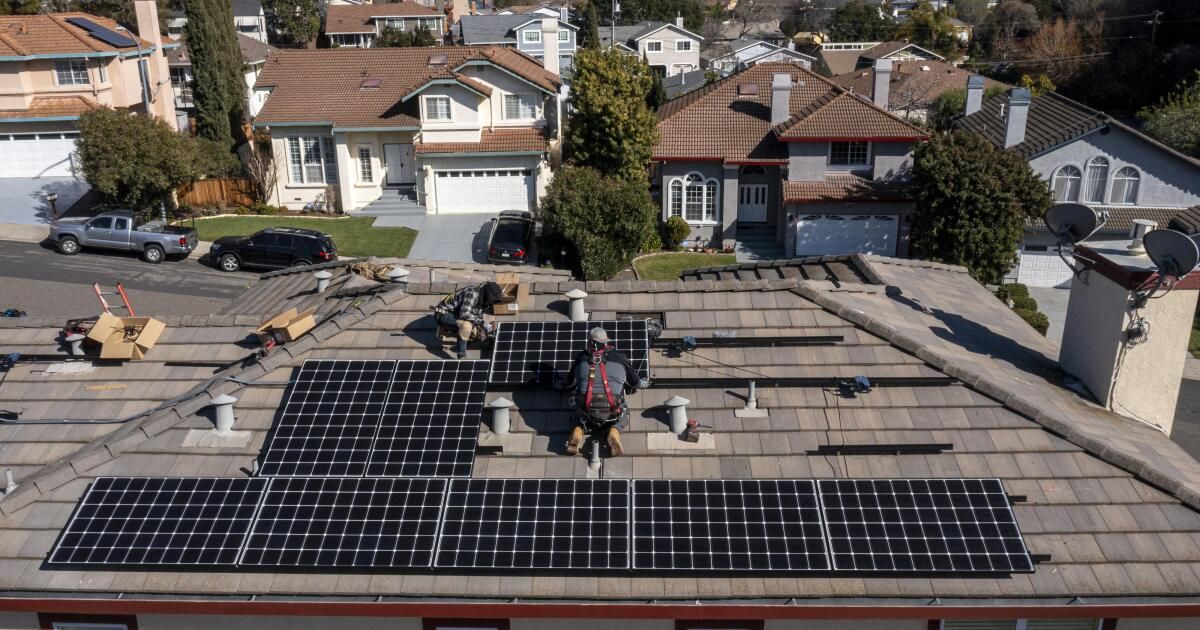The “great beautiful bill” did many things, not all right. A positive step was to repeal many of the green energy subsidies of the inflation reduction law. It is a bit disappointing that Congress does not repeal them all, as President Trump promised during the campaign. However, it is also surprising to witness a genuine reversal, something that was never a fact for this bill and that generally loses a policy of special interest.
To be clear, I want more green energy from more sources, such as wind, solar, geothermal and any other promising innovation of avenues that make possible. But subsidies such as those of the inflation reduction law are the wrong way to get there. They distort the Tax Code, poorly relieved of capital and favor companies that are already in the game, to the detriment of the new participants who could bring something more transformative.
The result is no more abundance; It is the chronicle disguised as climate policy.
The promise to reverse the broad credits and brochures of the Inflation Reduction Law was once a central part of the economic platform of the Republican Party. According to a Cato Institute analysisThese at one time were going to amount to $ 1.2 billion in 10 years, many times the originally projected cost. The version of the Chamber of the Budget took a significant turn, with hard deadlines for wind and solar tax credits and a stricter eligibility aimed at projects that could begin construction within 60 days after promulgation and be in service before 2029.
It was not perfect, but it was a real attempt to inject discipline into a policy that had escaped from the rails. The senators, however, had other plans and diluted the reform. New Talleuts were added. Key provisions were extended, and effective elimination moved years in the future.
Thanks to the generous grandfather's language, the projects that begin construction within a year of the promulgation of the Budget Law can block 10 more years of tax or investment tax credits. And what, by the way, tells how initial construction? Spend only 5% of the expected costs on solar panels or reserve a consulting company. In Washington, that's good enough.
The good news is that this diluted reform is expected to reduce green subsidies in approximately $ 500 billion in 10 years. That is not a small feat, especially in a city where “cutting” generally means “slightly slowing down the growth of programs that we can no longer pay.” It is doubly impressive since the forces that fight to maintain subsidies exceed the reformers by orders of magnitude.
Now, we are listening to the usual refrain: “But fossil fuels are also subsidized!” – As evidence of the indignation and the injustice that it is to cut green energy subsidies. I sympathize with the desire to end fossil fuel subsidies.
I want the end of all private sector subsidies. If your business model depends on the special treatment in the Tax Code, then, as economist Douglas Holtz-Eeakin once put itYou don't have a business. You have a tax shelter.
Yes, there are some persistent fossil fuel subsidies in books. Adam Michel de Cato de Cato Identify They: credits for an improved oil recovery, for marginal wells and for carbon capture and kidnapping. These are specific gifts, and they should also leave.
However, that most people clamor For the end of fossil fuel subsidies are pointed They are not subsidies at all, but simply neutral tax treatments, such as spending and exhaustion percentage, which are applied in many industries. They could distort investment decisions in general, but they are not special favors for oil and gas.
In addition, when comparing the size of green subsidies versus fossil fuels, the difference is amazing. Scaled by energy production, green energy receives subsidies at rates from 19 to 30 times of coal, oil and natural gas. According to Michel's analysis, 94% of the fiscal cost of the fiscal provisions related to energy during the next decade, $ 1.2 billion, would have gone to renewable energies. Only 6%, around $ 70 billion, would benefit fossil fuels. And again, much of that 6% is not designed for fossil fuel companies; It simply benefits them.
In other words, the idea that green subsidies were eveces while fossil subsidies thrive is not correct. That is not an argument to maintain fossil fuel subsidies; That is an argument to tame indignation.
If we have learned something here, it is that cutting subsidies is difficult. Once they are in their place, the armies of the rental applicants are mobilized to preserve them. Renewable energy developers, financial companies and politically connected manufacturers descend in Capitol Hill to keep money flowing.
But we have learned something else: the fight against the return can work. Even this partial reversal shows that the reformers are not impotent. The next time someone says that eliminating tax preferences is impossible, points to $ 500 billion in savings. We obtained that reversal not because politics was easy, but because some people remained firm.
Veronique de Rugy He is a senior research member at the Mercatus Center of the George Mason University. This article was produced in collaboration with the creators Syndicate.











